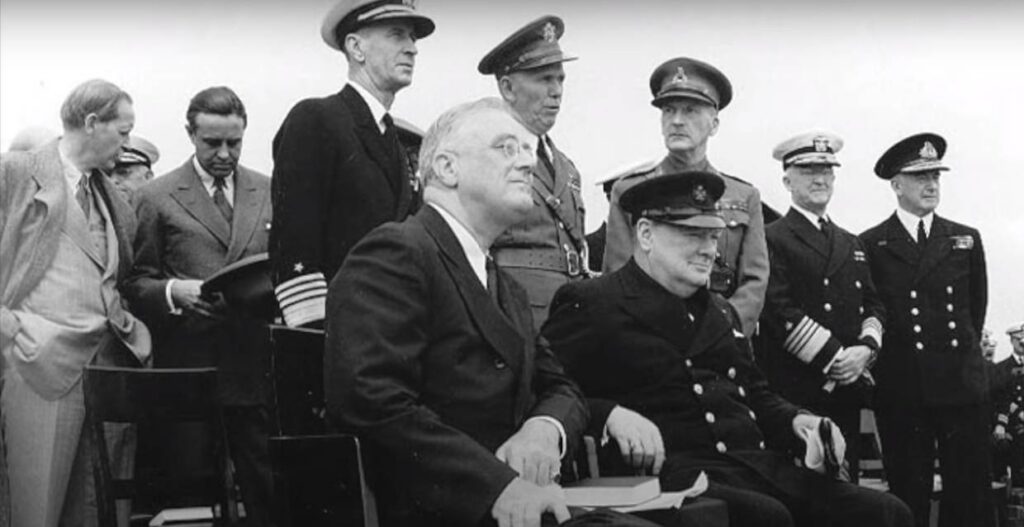How the Allied Leaders Shaped the World War II and the Post-War Order through Conferences in 1943

The Allied leaders, namely U.S. President Franklin D. Roosevelt, British Prime Minister Winston Churchill, and Soviet Premier Joseph Stalin, began to hold conferences in 1943 for several reasons.
Some of the main reasons were:
- To decide on strategies to defeat the Axis powers. The Allies needed to coordinate their military plans and operations against the common enemies of Nazi Germany, Fascist Italy, and Imperial Japan. They discussed issues such as the opening of a second front in Western Europe, the invasion of Sicily and Italy, the bombing of Germany, the supply of arms and equipment to the Soviet Union, and the future cooperation with China.
- To make plans for the post-war world. The Allies wanted to ensure a lasting peace and security after the war. They discussed issues such as the creation of a United Nations organization, the division of Germany into zones of occupation, the establishment of a war crimes tribunal, the recognition of national self-determination, and the provision of economic aid and reconstruction to war-torn countries.
- To decide what would happen to Axis territory after the war. The Allies wanted to prevent the resurgence of aggression and expansionism by the defeated powers. They discussed issues such as the demilitarization and denazification of Germany, the disarmament and democratization of Japan, the liberation and independence of European colonies, and the territorial adjustments and reparations in Europe and Asia.
- To promote their ideas and agendas. The Allies had different interests and visions for the post-war world. They tried to persuade each other to accept their proposals and demands. They also tried to resolve their conflicts and disagreements over various matters, such as the fate of Poland, the future of Eastern Europe, the role of France, and the involvement of Turkey.
The Allied leaders held several conferences in 1943, such as the Casablanca Conference in January, the Washington Conference in May, the Quebec Conference in August, and the Cairo Conference and Tehran Conference in November-December. These conferences were important for shaping the course and outcome of World War II and for laying the foundations for the post-war order.
The Allied Conferences of 1944 and 1945: How They Shaped the World War II and the Post-War Order
The Allied leaders, namely U.S. President Franklin D. Roosevelt, British Prime Minister Winston Churchill, and Soviet Premier Joseph Stalin, began to hold conferences starting in 1943 to discuss the progress and the plans of the war and the post-war world. They continued to meet in 1944 and 1945 in several major conferences, such as:
The Dumbarton Oaks Conference: The Birth of the United Nations
The Dumbarton Oaks Conference took place in Washington, D.C., from August to October 1944. It was attended by representatives of the United States, Britain, China, and the Soviet Union. The main purpose of the conference was to discuss the formation of the United Nations, a new international organization that would replace the League of Nations and maintain peace and security after the war. The conference agreed on the main organs of the United Nations, such as the Security Council, the General Assembly, and the International Court of Justice.
The Yalta Conference: The Final Strategy to Defeat Germany and Japan
The Yalta Conference took place in Crimea, from February 4 to 11, 1945. It was attended by Roosevelt, Churchill, and Stalin. The main purpose of the conference was to agree on the final strategy to defeat Germany and Japan, as well as to make plans for the post-war world. The conference agreed on several issues, such as:
- The division of Germany and Berlin into four zones of occupation by the United States, Britain, France, and the Soviet Union.
- The establishment of a Polish provisional government with free elections, as well as the recognition of the Soviet sphere of influence in Eastern Europe.
- The Soviet entry into the war against Japan within three months after Germany’s surrender, in exchange for territorial concessions in Manchuria and Korea.
- The participation of France in the occupation of Germany and the UN Security Council.
The Potsdam Conference: The Ultimatum to Japan and the Concerns over Eastern Europe
The Potsdam Conference took place in Germany, from July 17 to August 2, 1945. It was attended by Truman (who replaced Roosevelt after his death), Churchill (and later Attlee, who won the British election), and Stalin. The main purpose of the conference was to confirm the previous agreements on Germany and its demilitarization, denazification, decentralization, and democratization, as well as to issue an ultimatum to Japan to surrender or face “prompt and utter destruction“. The conference also discussed several issues, such as:
- The reparations from Germany and its eastern border with Poland.
- The disarmament and democratization of Japan.
- The liberation and independence of European colonies.
- The concerns over the Soviet policies in Eastern Europe.
These conferences in 1943 were important for shaping the course and outcome of World War II and for laying the foundations for the post-war order. However, they also revealed the growing tensions and mistrust between the Western Allies and the Soviet Union, which would eventually lead to the Cold War.
Also, Read: The Academic Suspension






